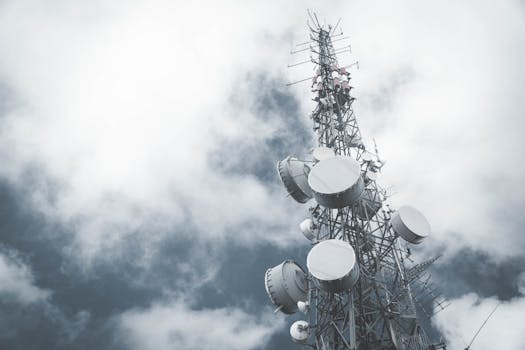
The Future is Now: Exploring the Cutting-Edge Innovations in Satellite Telecommunications
Satellite telecommunications has come a long way since its inception, and the future is now. With the rapid advancement of technology, the industry is witnessing a significant transformation, driven by cutting-edge innovations. The focus keyword Satellite Telecommunications is at the forefront of this revolution, enabling faster, more reliable, and more secure communication services. In this article, we’ll delve into the latest developments in satellite telecommunications, exploring the trends, technologies, and applications that are shaping the future of the industry.
High-Throughput Satellites: A New Era of Satellite Telecommunications
One of the most significant innovations in satellite telecommunications is the development of high-throughput satellites (HTS). These satellites are designed to provide higher bandwidth and faster data transfer rates, making them ideal for applications such as broadband internet, video streaming, and mobile connectivity. HTS are equipped with advanced technologies like phased arrays, beam-hopping, and digital signal processing, which enable them to offer higher capacity and more efficient use of spectrum. Companies like Intelsat, SES, and Viasat are leading the charge in HTS, launching new satellites and services that are transforming the industry.
Another key innovation in satellite telecommunications is the use of laser communication systems. Laser communications, also known as optical communications, use laser beams to transmit data between satellites and ground stations. This technology offers several advantages, including higher data transfer rates, lower latency, and improved security. Laser communication systems are particularly useful for applications like deep space missions, where traditional radio frequency (RF) communications are limited by distance and interference. NASA and ESA are actively exploring the use of laser communications for future space missions, and companies like SpaceX and OneWeb are developing laser-based communication systems for their satellite constellations.
5G and the Role of Satellite Telecommunications
The advent of 5G is another significant development that’s driving innovation in satellite telecommunications. 5G networks require higher capacity, lower latency, and greater connectivity, which satellite telecommunications can provide. Satellite-based 5G services can offer extended coverage, improved reliability, and enhanced mobility, making them ideal for applications like IoT, smart cities, and emergency response. Companies like Ericsson and Qualcomm are working on integrating satellite communications into 5G networks, and 3GPP has already defined standards for satellite-based 5G services.
In addition to 5G, satellite telecommunications is also playing a crucial role in the development of other emerging technologies like artificial intelligence (AI), machine learning (ML), and Internet of Things (IoT). Satellite-based AI and ML can enable applications like predictive maintenance, anomaly detection, and real-time analytics, while satellite-based IoT can connect remote devices and sensors, enabling new use cases like smart agriculture, smart transportation, and smart energy management.
Challenges and Opportunities in Satellite Telecommunications
Despite the many innovations and advancements in satellite telecommunications, there are still several challenges that need to be addressed. One of the main challenges is the issue of spectrum allocation, as the increasing demand for satellite services is putting pressure on the available spectrum. Another challenge is the need for greater standardization, as the industry is still fragmented, with different companies and organizations using different technologies and protocols.
However, these challenges also present opportunities for innovation and growth. The development of new technologies like quantum communications and nanosatellites is expected to further transform the industry, enabling new applications and use cases. The use of satellite telecommunications in emerging markets like Africa and Asia is also expected to drive growth, as these regions are experiencing rapid economic development and increasing demand for connectivity.




